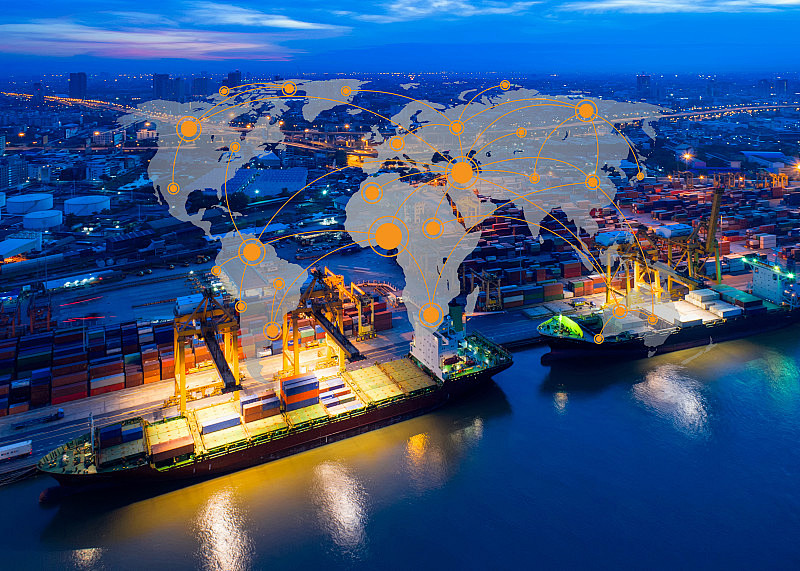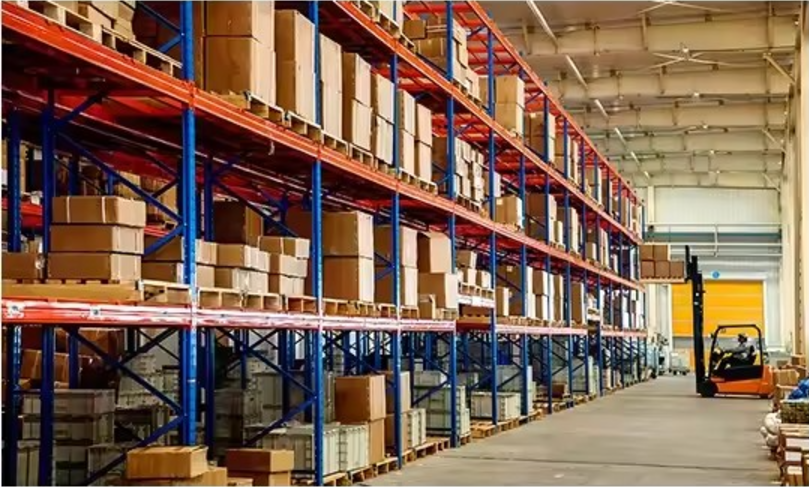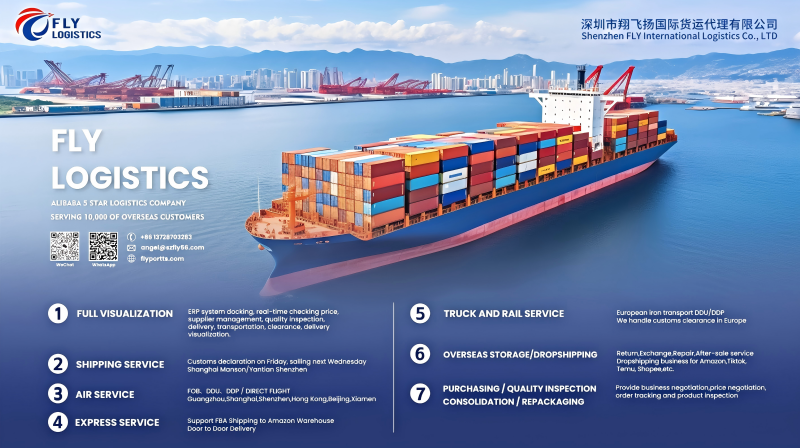In 2023, global trade volume reached approximately $32 trillion, with containerized cargo accounting for nearly 60% of all goods transported by sea. Among the many shipping methods, Full Container Load (FCL) remains one of the most efficient and reliable ways to move large quantities of goods. Whether you are shipping heavy machinery, electronics, or industrial supplies, understanding how FCL shipping works is crucial for businesses looking to optimize their logistics and minimize costs.
What is Full Container Load (FCL) Shipping?
FCL shipping refers to the method where a shipper rents an entire container for their exclusive use. Unlike Less-than-Container Load (LCL), where cargo from multiple shippers is consolidated into one container, FCL involves one company or individual utilizing the full capacity of a shipping container. Typically, FCL shipments are used for larger volumes of goods or when the shipper prefers to handle all their freight together.
An FCL container can hold a variety of goods, ranging from 20-foot containers (approximately 33 cubic meters) to 40-foot containers (roughly 67 cubic meters), or even 40-foot high cube containers (about 76 cubic meters), offering ample space for different kinds of cargo. The key advantages of FCL are speed, security, and control over the entire shipment, making it a popular choice for businesses with significant shipping needs.
The Benefits of FCL Shipping
Cost-Effectiveness for Large Shipments
For larger shipments, FCL can be more cost-effective than LCL. The price per cubic meter or kilogram can decrease as the shipment volume increases, making FCL shipping a more economical choice for businesses moving large quantities of goods. While the upfront cost of renting an entire container may seem high, the overall cost per unit is often lower than shipping smaller amounts through LCL.
Faster Transit Time
One of the primary advantages of FCL is faster transit times. Since the shipment is solely for one customer, there is no need to wait for other shipments to be consolidated or unloaded. FCL shipments are also typically prioritized at ports, resulting in quicker delivery times compared to LCL, which often involves more complex handling.
Increased Security
When you book an entire container, you have full control over the contents and its handling. This reduces the risk of theft, damage, or loss that can occur when shipments are mixed with goods from multiple sources. FCL containers are also typically sealed, which adds an extra layer of security.
More Control Over the Shipment
With FCL shipping, the shipper has more flexibility regarding the timing and handling of the goods. You can dictate the pickup and delivery schedules, which provides better coordination and control over your supply chain. This is particularly advantageous for businesses with strict inventory management or time-sensitive deliveries.
Less Risk of Damage
Since the goods in an FCL shipment are not mixed with other shipments, the risk of cross-contamination, shifting, or damage is significantly reduced. This is especially important for delicate or high-value goods, such as electronics or pharmaceuticals.

How Does FCL Shipping Work?
Booking and Container Selection
The first step in the FCL shipping process is to book the container. This typically involves working with a freight forwarder or shipping company to determine the best type of container for your cargo. A 20-foot or 40-foot container is commonly used, but larger options such as 45-foot containers may also be available, depending on the volume and size of the goods.
Loading the Goods
Once the container has been secured, the next step is to load the goods. Since the container is exclusively for your shipment, you have the flexibility to organize and pack the goods as efficiently as possible. If the goods are delicate or valuable, it is important to properly secure them inside the container to avoid any movement during transit. Many businesses hire professional packing services to ensure the goods are safely loaded.
Transport to Port
Once packed, the container is transported to the designated port where it will be loaded onto a cargo ship. This stage can involve road transport, rail, or sometimes even air, depending on the location and logistics involved. During this phase, it is important to ensure that all necessary documentation, such as bills of lading, invoices, and customs paperwork, are completed and ready for inspection.
Customs and Inspection
Before the container is shipped, it must go through customs clearance. The shipping company or freight forwarder will typically handle customs formalities on your behalf, ensuring that the goods meet all regulatory requirements for export. Any delays in customs clearance can affect the shipping timeline, so it’s important to ensure all paperwork is accurate and complete.
Shipping and Transit
The container is then loaded onto a ship, where it will be transported to the destination port. The shipping duration will depend on the origin and destination ports, weather conditions, and other factors. FCL shipments often benefit from a more direct route, as they are not subject to detours caused by LCL cargo consolidation or additional handling.
Arrival at the Destination Port
Once the container reaches the destination port, it undergoes unloading and customs inspection. After clearing customs, the container is ready to be delivered to the final destination via road, rail, or inland waterways. Depending on the arrangement, the shipping company may handle final delivery to your warehouse or facilities.
Delivery and Unloading
The final step is unloading the goods at their destination. If the goods were packed securely and efficiently, this step should be straightforward. However, careful unpacking is necessary to ensure no damage occurs during this final stage.
FCL vs. LCL: Which is Better?
Full Container Load (FCL) Services
Our FCL service is ideal for clients with large shipping volumes, especially for the efficient transport of full container loads. Thanks to our long-standing partnerships with reputable shipping companies, FLY LOGISTICS ensures stable routes, fixed schedules, and highly competitive rates. We offer a variety of container types (such as 20-foot, 40-foot, and 40-foot high cube) to accommodate different cargo needs.
In FCL services, FLY LOGISTICS offers a comprehensive range of value-added services, including door-to-door pickup, labeling, repacking, quality inspection, warehousing, customs clearance, cargo insurance, and procurement support. Our multimodal transportation capabilities allow us to provide door-to-door and port-to-port services, streamlining the entire shipping process and ensuring your cargo arrives at its destination safely and on time.
Less than Container Load (LCL) Services
For customers with smaller shipment volumes, our LCL service consolidates multiple clients’ cargo into a single container, reducing costs and avoiding the expense of empty container space. FLY LOGISTICS maintains strong partnerships with major shipping lines, ensuring flexibility and efficiency in our LCL services while providing highly competitive LCL rates.
We offer the same extensive range of value-added services for our LCL clients, including warehousing, quality inspection, labeling, repacking, customs clearance, and cargo insurance, simplifying logistics management for our customers. With our strong customs clearance capabilities and comprehensive compensation system, customers can have peace of mind when shipping cross-border.
Costs of FCL Shipping
The cost of FCL shipping depends on various factors such as the size of the container, the destination port, and additional services such as customs clearance or cargo insurance. While the per-unit cost may be lower than LCL for large shipments, the overall expense for FCL can be higher due to renting the entire container.
Additional costs may include:
- Port Fees: Charges for using the port facilities.
- Container Handling Fees: Fees for loading, unloading, and storing the container at the port.
- Insurance Costs: Optional but recommended to protect the goods during transit.
Conclusion
Full Container Load (FCL) shipping is a reliable, cost-effective, and secure method for transporting large quantities of goods. It offers faster transit times, more control, and increased security compared to other shipping methods, making it the preferred choice for many businesses involved in international trade. By understanding how FCL shipping works and the advantages it offers, you can make more informed decisions about your logistics strategy. Whether you’re shipping bulk industrial goods, consumer electronics, or high-value products, FCL ensures your cargo gets to its destination most efficiently.





